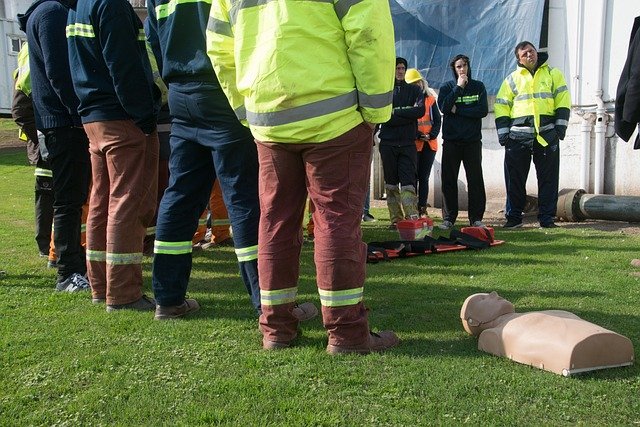What to Expect from Physical Construction Work in Japan – Non-Japanese Speakers Welcome
Construction environments in Japan often include structured routines where team communication relies on gestures, visual cues, or translated instructions. Non-Japanese speakers participating in these roles may be assigned tasks that focus on physical work, such as moving supplies, preparing materials, or cleaning equipment after use.

How are roles divided in multilingual construction crews?
In Japanese construction environments, role division often takes into account language abilities. Non-Japanese speakers are typically assigned tasks that focus on physical work, requiring less verbal communication. These roles may include:
-
Moving and organizing construction materials
-
Assisting with basic assembly or demolition
-
Operating simple machinery under supervision
-
Cleaning and maintaining work areas
This division allows multilingual crews to function efficiently, with each member contributing according to their strengths. Japanese-speaking team members often handle more complex tasks or those requiring extensive communication, while non-Japanese speakers focus on essential physical labor that keeps the project moving forward.
What strategies are used for on-site communication?
Effective communication is crucial on construction sites, regardless of language barriers. In Japan, several strategies are employed to ensure clear understanding among all team members:
-
Visual demonstrations: Supervisors often demonstrate tasks physically rather than relying solely on verbal instructions.
-
Hand signals and gestures: A set of universally understood signals is used for common actions and safety warnings.
-
Translated instruction sheets: Key information and safety guidelines are often provided in multiple languages.
-
Buddy systems: Pairing non-Japanese speakers with bilingual colleagues can help facilitate communication and learning.
-
Basic Japanese language training: Many companies offer fundamental Japanese lessons focused on construction-specific terminology.
These methods help create a safe and productive work environment where all team members can contribute effectively, regardless of their Japanese language proficiency.
How do non-Japanese speakers handle physical tools under supervision?
Working with physical tools is a core aspect of construction work. For non-Japanese speakers, the process typically involves:
-
Initial safety briefings, often with translated materials or interpreters
-
Hands-on demonstrations by supervisors or experienced colleagues
-
Supervised practice sessions to ensure proper tool handling and safety procedures
-
Gradual increase in responsibility as proficiency improves
Japanese construction sites place a strong emphasis on safety and proper technique. Non-Japanese speakers can expect patient guidance and frequent check-ins from supervisors to ensure they’re using tools correctly and safely. Visual aids, such as instructional posters or videos, are often used to reinforce proper tool handling techniques.
What are the daily preparation and post-shift duties?
Construction work in Japan follows a structured routine that applies to all workers, regardless of language ability. Typical daily responsibilities include:
-
Morning assembly (朝礼, chorei): A brief meeting to discuss the day’s tasks and safety reminders
-
Equipment check: Inspecting and preparing necessary tools and safety gear
-
Area preparation: Setting up workspaces and ensuring cleanliness
-
End-of-day cleanup: Thorough cleaning of the work area and tool organization
-
Reporting: Completing simple task completion forms, often with multilingual options
Non-Japanese speakers are expected to participate in these routines, which help maintain the high standards of cleanliness and organization typical in Japanese workplaces. While language may be a barrier during morning assemblies, key points are often communicated through gestures or translated summaries.
What weather and clothing considerations exist for outdoor tasks?
Japan experiences diverse weather conditions throughout the year, which significantly impact outdoor construction work. Non-Japanese workers should be prepared for:
-
Hot, humid summers: Lightweight, breathable clothing and sun protection are essential
-
Cold winters: Layered clothing, including thermal undergarments, is necessary in many regions
-
Rainy seasons: Waterproof gear is crucial during Japan’s tsuyu (rainy season) and typhoon season
Many construction companies provide appropriate workwear, but it’s advisable to have personal items such as:
-
Steel-toed safety boots
-
Work gloves suitable for various tasks
-
Sun hats or warm caps depending on the season
-
Personal protective equipment (PPE) like safety glasses and ear protection
Adapting to local clothing norms is important. Japanese construction sites often have specific guidelines for appearance, including tucked-in shirts and properly fastened safety gear.
What can non-Japanese speakers expect in terms of work culture and integration?
Integrating into Japanese construction work culture can be an enriching experience for non-Japanese speakers. While language barriers exist, many aspects of the work environment facilitate inclusion:
-
Emphasis on teamwork: Japanese construction sites value collective effort, often fostering a sense of camaraderie among workers
-
Respect for punctuality and diligence: Arriving on time and showing dedication to tasks are highly appreciated
-
Opportunities for skill development: Many companies offer training programs to help workers advance their careers
-
Cultural exchange: Working alongside Japanese colleagues provides unique insights into local customs and work ethics
Non-Japanese speakers who demonstrate a willingness to learn and contribute to the team’s success often find themselves well-respected members of the construction crew, despite language limitations.
In conclusion, physical construction work in Japan offers a unique opportunity for non-Japanese speakers to engage in meaningful employment while experiencing Japanese work culture firsthand. By understanding the role divisions, communication strategies, daily routines, and cultural expectations, foreign workers can prepare themselves for a rewarding experience in Japan’s construction industry. While language barriers may present initial challenges, the structured nature of Japanese construction sites and the emphasis on visual communication make it possible for motivated individuals to thrive in this dynamic work environment.




